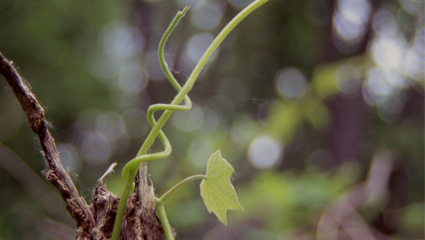Christ is risen, Working Preacher!
Christ is risen, indeed!
This is the day, the pinnacle of the church year, the reason we gather to worship the God whose love is stronger than hate and commitment to life can overcome death.
As preachers, we often feel a tad more pressure at Easter than usual. After all, not only are we likely to see more of our members as well as visitors than on any other day of the church year except perhaps Christmas Eve, but we’ve already had multiple Holy Week services and sermons! So more than likely we approach Easter with a mix of excitement and exhaustion as we strain to find something new to say about the old, old story.
While there is no sure-fire recipe for great festival preaching, one approach I’ve found reliable is to focus on one particular detail in the familiar story that seems not only to provide a concrete entry into the larger narrative but also to speak to the moment. This year, what stuck out to me when hearing Matthew’s account of the resurrection — and I find I pay attention better when I read it aloud or listen to someone else reading it — was the earthquake. Little wonder, given the recent earthquake, Tsunami, and nuclear reactor catastrophe in Japan. For that very reason, I suspect that many of you and many of our hearers may notice this detail as well.
Matthew is the only evangelist to record this detail, and because of recent events, the earthquake as a sign of God’s activity can seem awkward. But for Matthew it’s not the destructive power of an earthquake that matters but rather the fact that the natural world itself cannot help but witness to God’s intervention in human affairs through Jesus. (For this reason, Matthew also tells of the miraculous star that guided the magi to Bethlehem.)
Through the earthquake, Matthew signals that Christ’s death and resurrection make a difference, both in the lives of his immediate disciples as well as to the whole world and, indeed, the whole cosmos. As theologians have commented over the centuries, the cross and resurrection become the pivot on which all history turns, the fulcrum by which God leverages our destiny.
One way to invite hearers to move from glad celebration of the day — which of course is important — to more active reflection on its significance would be to ask our people what difference the resurrection makes. What difference, that is, does it make to know that God entered fully into our human life — our joys and sorrow, hopes and disappointments, loves and losses. What difference does it make that God therefore understands us deeply? What differenced does it make that God suffered even death as one of us? What difference does it make that God raised Jesus from the dead, signally a new reality and new life that death cannot overshadow?
These are big questions, and they stand at the very heart of the Christian faith. Though significant, however, most Christians rarely take the time — or have developed the confidence — to contemplate and answer them. For this reason, a significant role of the preacher is to model what it’s like to address these questions. Whether you do this by borrowing (and explaining!) the language of the church or through examples from daily life, the key is to help people see and be able to imagine the difference Christ’s death and resurrection make.
Keep in mind, however, that the preacher models responding to these questions rather than offers the definitive answer. That is, the hearer shouldn’t feel that once the sermon is done there are no more answers or that they should not also tackle such questions. In this regard, you serve as a coach, helping people ask and answer the significant questions of the faith for themselves.
Certainly one way to do this in the church service would be to have people stop and talk these questions over with each other, as we’ve discussed in previous weeks. Another possibility — and perhaps easier to imagine on Easter Sunday — would be to provide another portion of the service where, having watched you engage such questions, they now can do the same. One idea for doing this was suggested to me by an exercise sponsored by a stay-at-home mom in Minneapolis this past fall. She picked a tree on one of the Minneapolis lakes and set beside it a huge supply of colored stock-paper strips with holes punched in them to make tags. She also provided pens and yarn and invited people to write their wishes on the tags and hang them on the tree. My family and I happened on the “wishing tree” on one of our fall walks and found all the wishes hanging there really quite moving.
This past week I pulled out some stalks of pussy willow that we arrange each year in a vase to hang blown and decorated eggs from. Perhaps you have egg trees in your home, too. It reminded me of the wishing tree and it occurred to me that we could similarly prepare a tree on the church property, or even bring branches into the sanctuary, and ask people to write on their tags someplace they see God making a difference and hang those on the branches. They could name places where they see new life and want to give thanks. They might also write prayers of places or people they believe need new life and commend those to God. Either way, this would be a tangible exercise to help folks think about the ways in which God’s new life and the resurrection make a difference in our lives and the world, and by participating in this exercise they would help create a tangible — and beautiful! — reminder of the grace of God in the world.
However you proclaim the resurrection of Christ, Working Preacher, please know how grateful I am for your labor, creativity, and fidelity. On this day especially it is incredibly encouraging to think how many preachers across the world will lead us in the ancient and blessed Easter acclamation, “Christ is risen — Christ is risen indeed!”
Blessed Easter, Working Preacher!
Yours in Christ,
David
If you want to see an article on the wishing tree or the website that describes it, check out one of these two links:
Star Tribune and
The Hokey Pokey Project (Look for the post for October 5th.)
Also, a number of folks expressed interest in using our “Easter is Coming” video. You can check out the video on You Tube here and download a free copy here.

